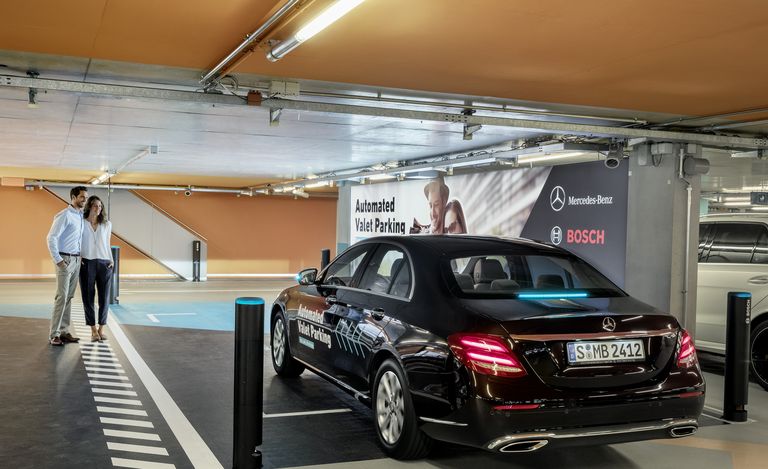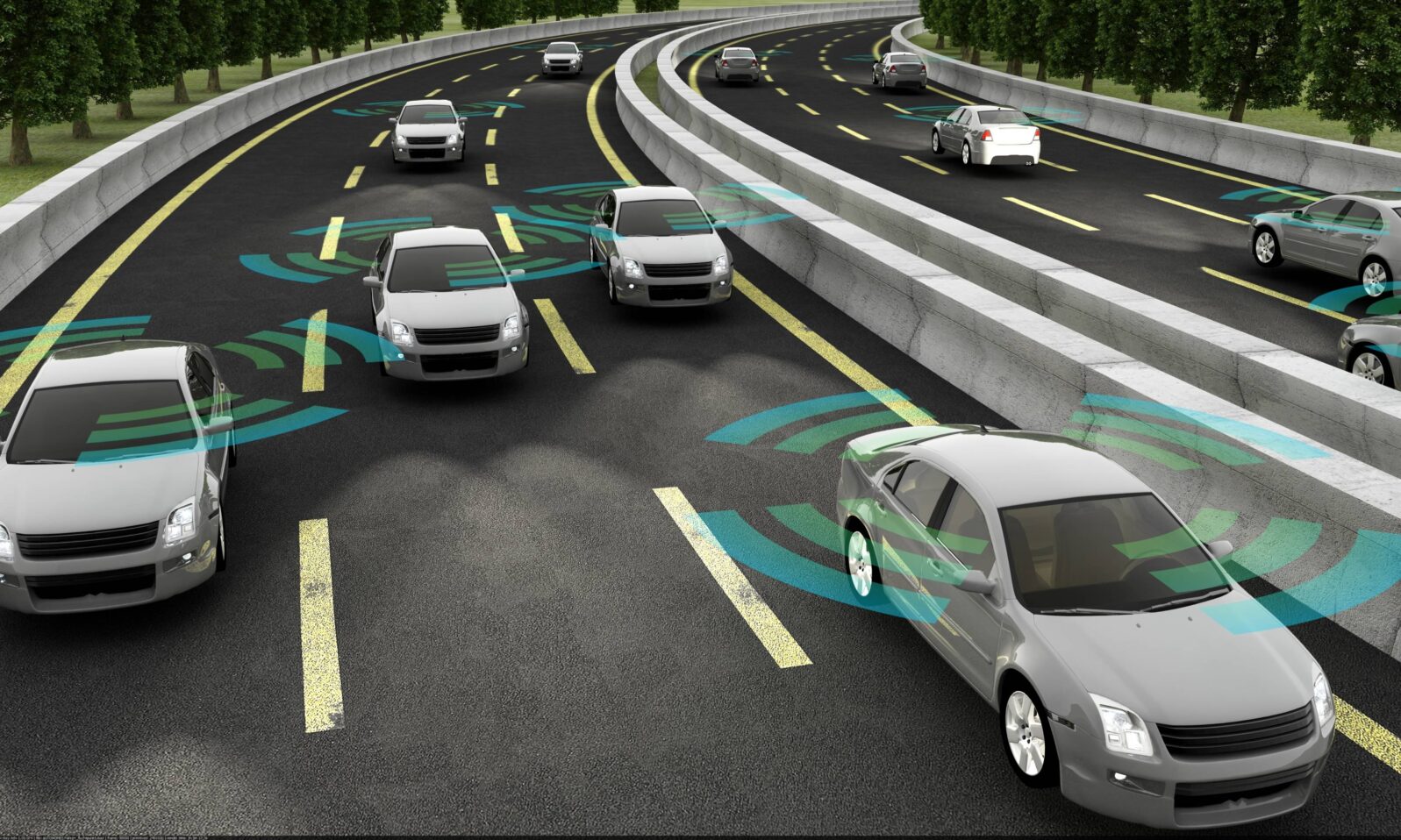How self-driving cars can really work today
At Mind Matters News, we advocate self-driving technology that doesn’t confuse human and machine powersI have been a critic of current approaches to self-driving for a while. One conventional view seems to be: Humans can drive with just two eyes, two ears, and a brain, so a car full of cameras should be sufficient for the task. Right?
The idea behind that view is a fashionable nineteenth-century philosophy that somehow never got retired, the “mechanical philosophy” that the world is one giant machine. As mathematician Pierre Laplace (1749–1827) famously said,
We may regard the present state of the universe as the effect of the past and the cause of the future. An intellect which at any given moment knew all of the forces that animate nature and the mutual positions of the beings that compose it, if this intellect were vast enough to submit the data to analysis, could condense into a single formula the movement of the greatest bodies of the universe and that of the lightest atom; for such an intellect nothing could be uncertain and the future just like the past would be present before its eyes.
Of course, the world has changed a lot since Laplace’s day. We’ve learned about quantum mechanics, for instance, which shows that the world is infinitely stranger than the mechanists could have foreseen.
So what does any of this have to do with self-driving? First, much of what we do when we drive can’t really be automated. We use very subtle cues from our environment to tell us really important things about the world. We build entire models of reality, test them out, and keep or discard them as needed. Is that tiny red flash in my vision a picnic napkin someone dropped or the beanie worn by a little child who is about to step into my car’s path?
We don’t just try to classify the image (which is what the computer does). We construct an entire world, imagine how that world would look with either the napkin or the child, imagine the subtle physics and intentionality of both, and compare them to what we see. This requires a complete, automatic, instantaneous simulation of both the physics and psychology of both hypothetical situations.
That is why, at Mind Matters News, we have been advocating a different approach to self-driving, one that doesn’t confuse the powers of humans and machines. We have called this approach virtual rails. The basic idea is that the environment should contain sensors and beacons which alert cars to the geometry of the space and possibly play a coordinating role in helping cars cooperate with the space and with each other. The sensors do for the car, in a limited but sufficient way, what our hard-to-compute intuitions do for us. Using technology based on this idea, Bosch and Daimler have constructed a parking lot in Stuttgart, Germany, where cars with the right technology can park themselves in a fully automated fashion.
This system qualifies as full Level 4 self-driving because, within a certain well-defined boundary, the car is fully autonomous. That is, the driver can entirely ignore the driving task. The driver steps out of the car and pushes a button, and then the car navigates the parking lot to find itself a space. But this technology works because the garage itself is full of sensors and beacons that both help the car navigate to the right space and alert it about other moving objects in the area. The car also has markers that warn both drivers and pedestrians that the car is operating without a driver.

To get a feel for the difference between the virtual rails method of self-driving and the current “cameras and radar” method used by Tesla, just look at Tesla’s new “automated” system, Enhanced Summon. First of all, Enhanced Summon will not find a parking space for you. It can come out of a space but it cannot go into one. Additionally, it requires that the human be supervising the process at all times and it has a maximum range of 165 feet.
The Bosch and Daimler system is limited only by the size of the virtual rail system (the initial test garage is well over 165 feet). To get an idea of the other limitations of the Tesla system, just see the operating manual that will be coming out with the new version of Enhanced Summon.
Enhanced Summon is unlikely to operate as intended in the following types of situations:
GPS data is unavailable due to poor cellular coverage.
The driving path is sloped. Enhanced Summon is designed to operate on flat roads only (up to 10% grade).
A raised concrete edge is detected. Enhanced Summon will not move the vehicle over an edge that is higher than approximately 1 in (2.5 cm).
One or more of the ultrasonic sensors or cameras is damaged, dirty, or obstructed (such as by mud, ice, or snow, or by a vehicle bra, excessive paint, or adhesive products such as wraps, stickers, rubber coating, etc.).
Weather conditions (heavy rain, snow, fog, or extremely hot or cold temperatures) are interfering with sensor or camera operation.
The sensors are affected by other electrical equipment or devices that generate ultrasonic waves.
Modp1 el X is in Trailer Mode or an accessory is attached. Note: Enhanced Summon is disabled if Model SModel XModel 3 is in Valet mode (see Valet Mode).
Warning: The list above does not represent an exhaustive list of situations that may interfere with proper operation of Enhanced Summon. It is the driver’s responsibility to remain in control of Model SModel XModel 3 at all times. Pay close attention whenever Enhanced Summon is actively moving Model SModel XModel 3 and stay prepared to take immediate action. Failure to do so can result in serious property damage, injury or death.
“Manual for the Enhanced Summon from the Firmware” at Tesla
A virtual rail system features none of the limitations set out in the manual.
It turns out, when choosing between (a) putting in the engineering effort to making a working system and (b) relying on questionable 19th century metaphysical assumptions about nature, you should always choose (a). This commitment to engineering over techno-utopia has bumped Mercedes, which has got the okay for driverless valet parking, into the lead in self-driving technology.
Also by Jonathan Bartlett on self-driving cars:
Self-driving cars need virtual rails.
Who assumes moral responsibility for self-driving cars?
Guess what? You already own a self-driving car
Self-driving vehicles are just around the corner … on the other side of a vast chasm…
See also: Virtual roads and West Virginia back roads: AI’s temptation to theft over honest toil (William A. Dembski)
